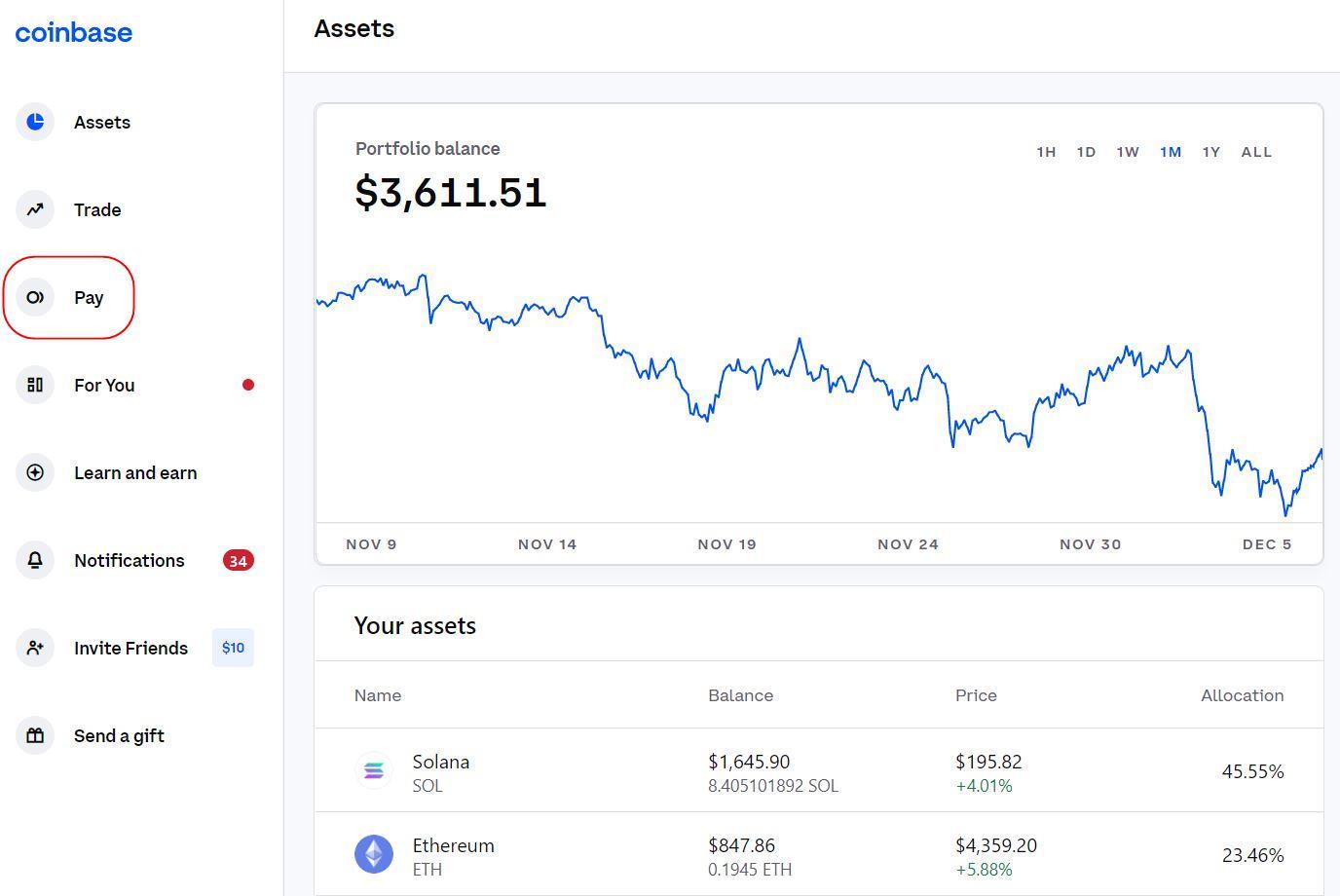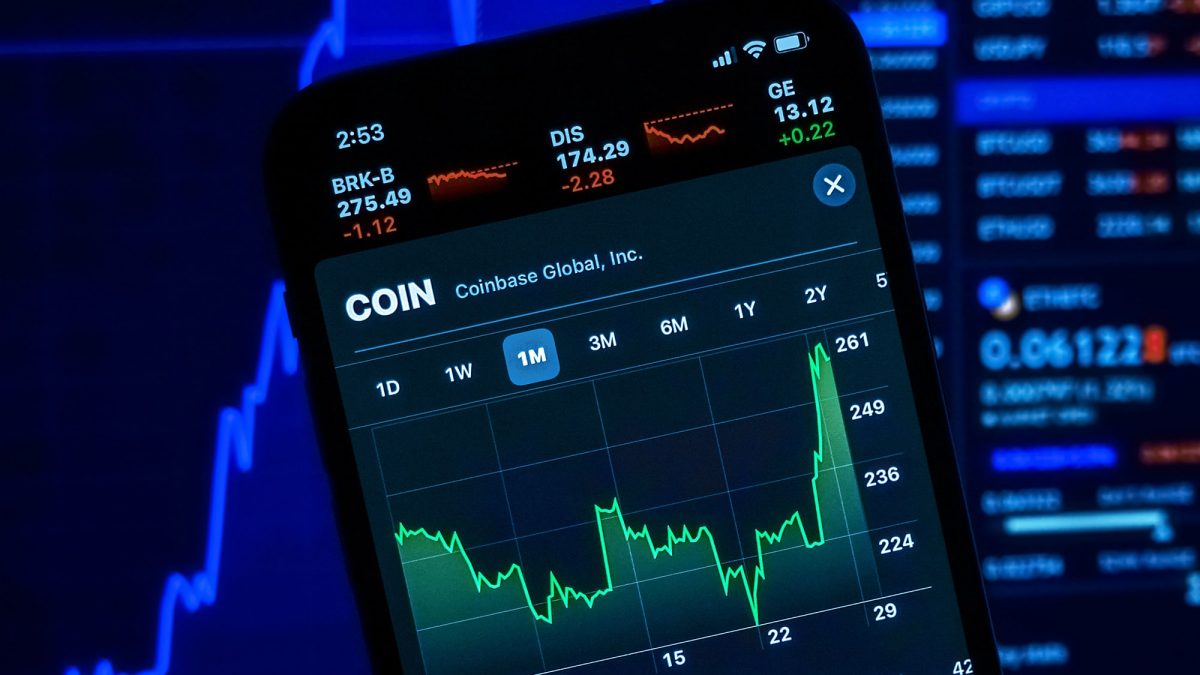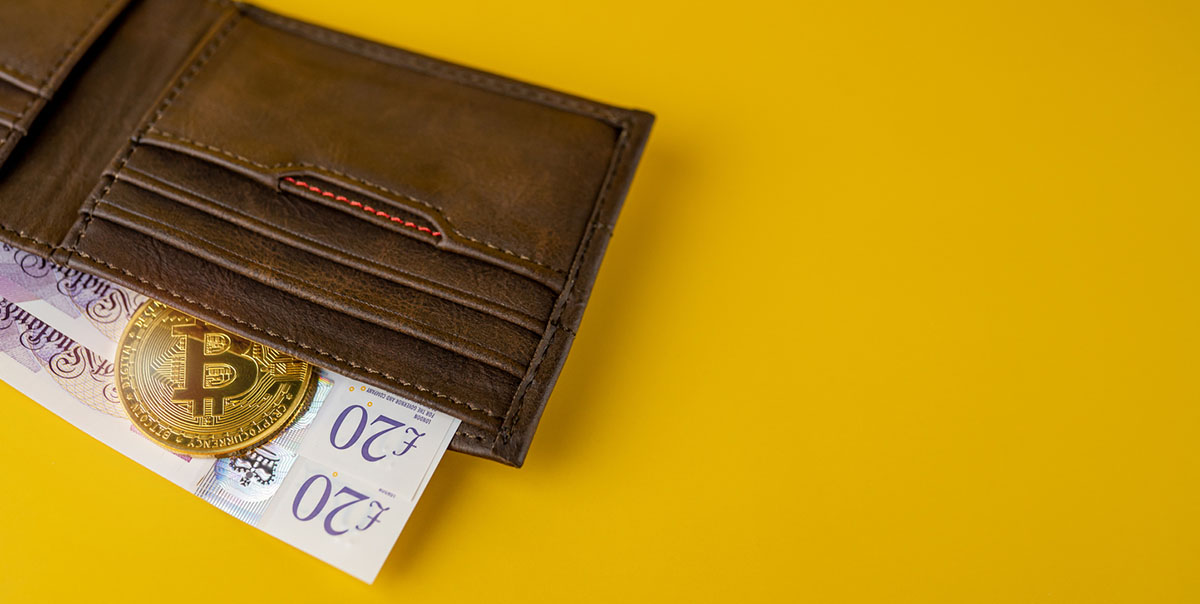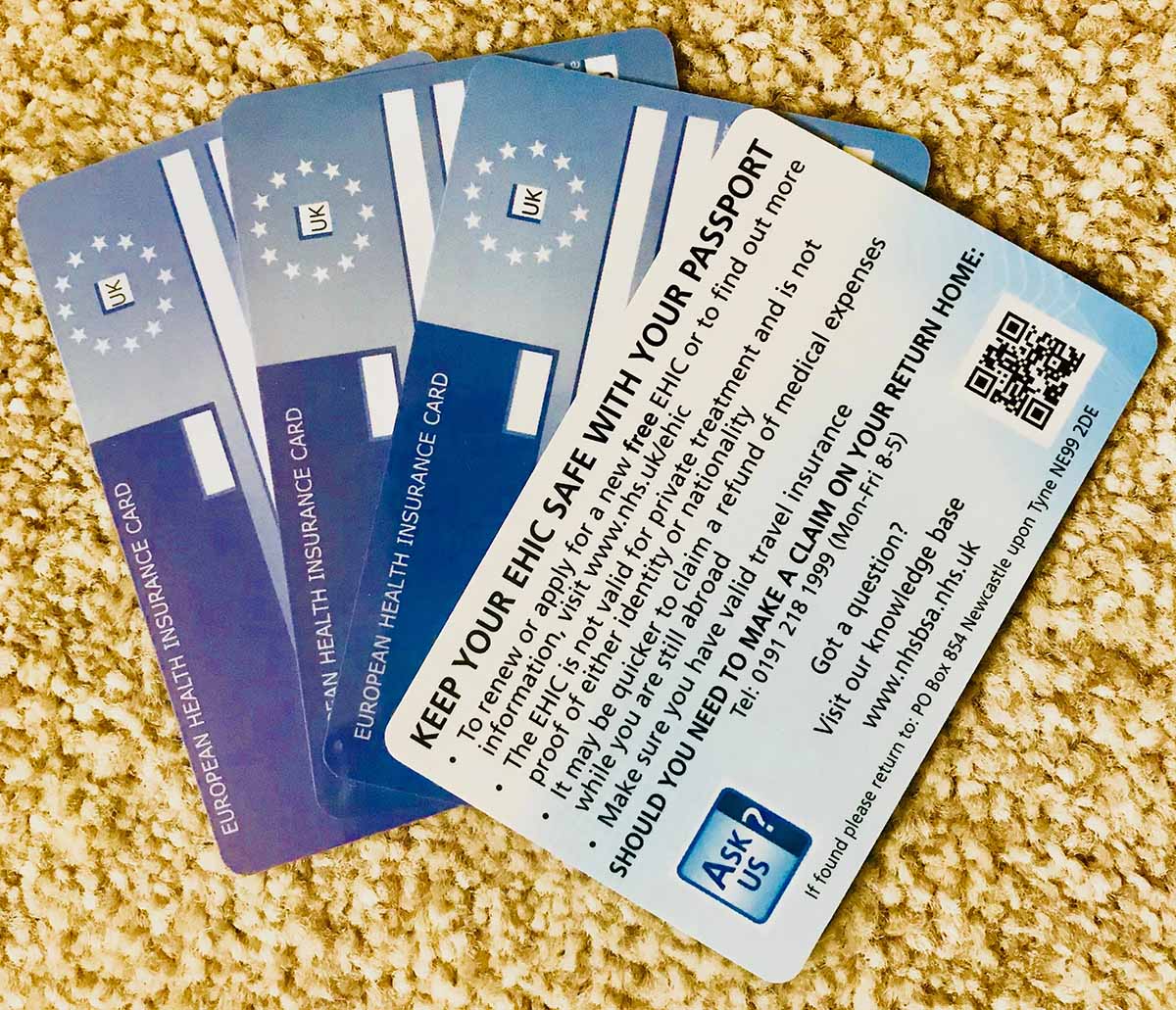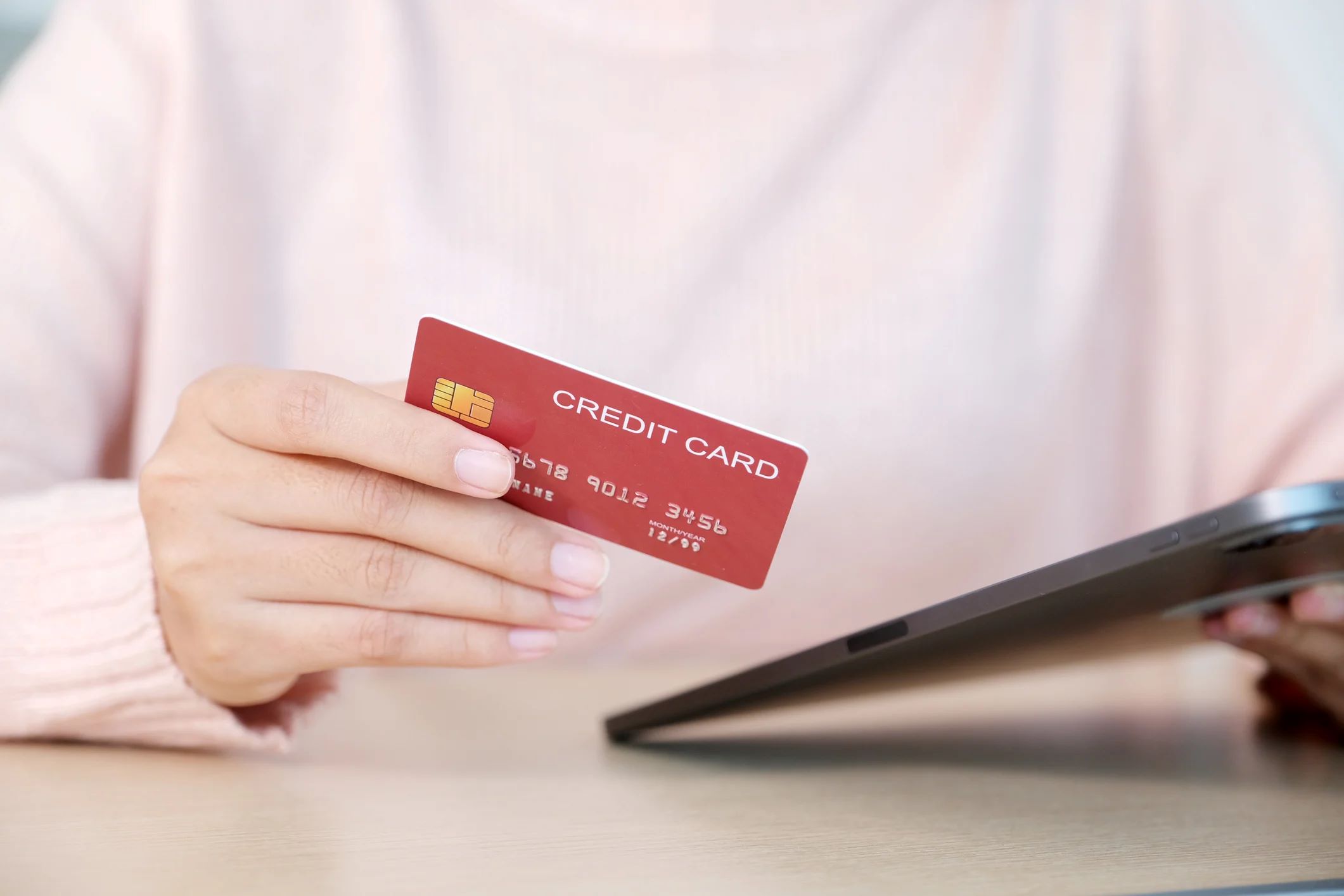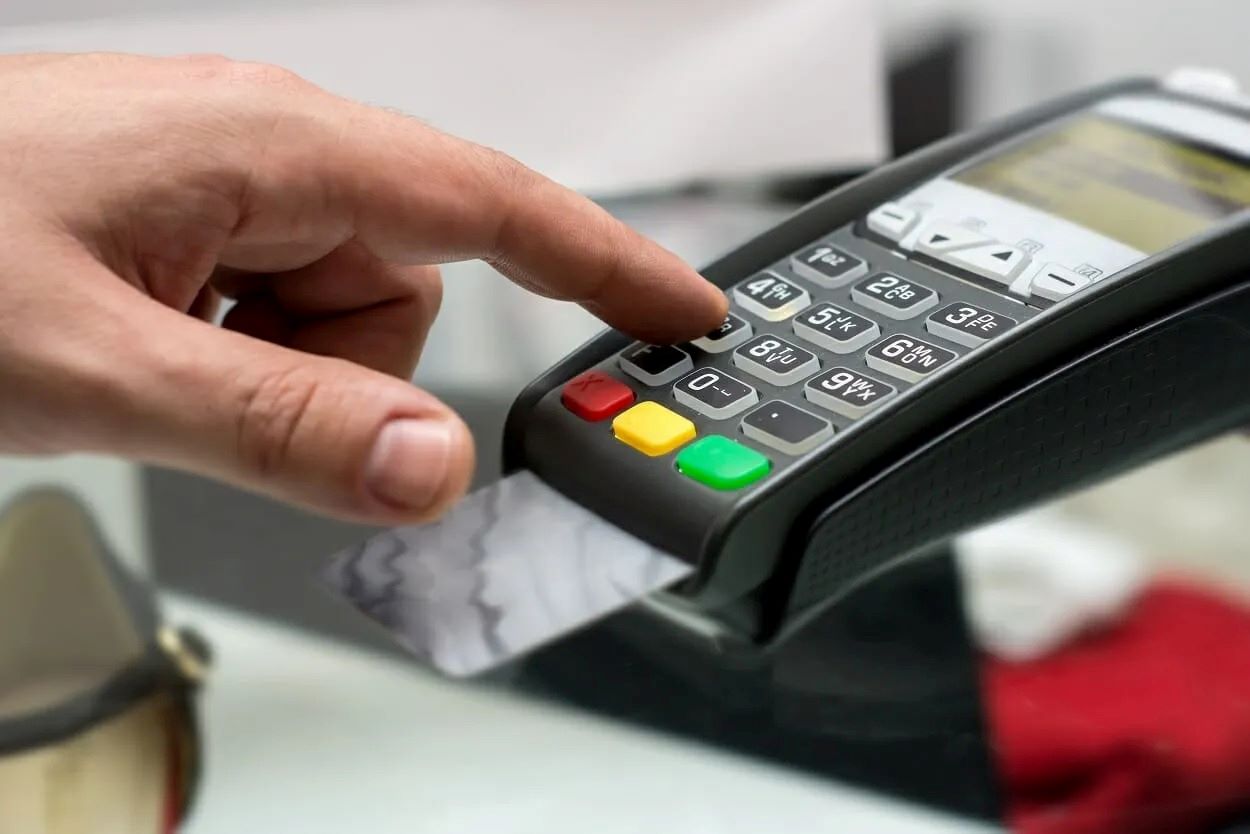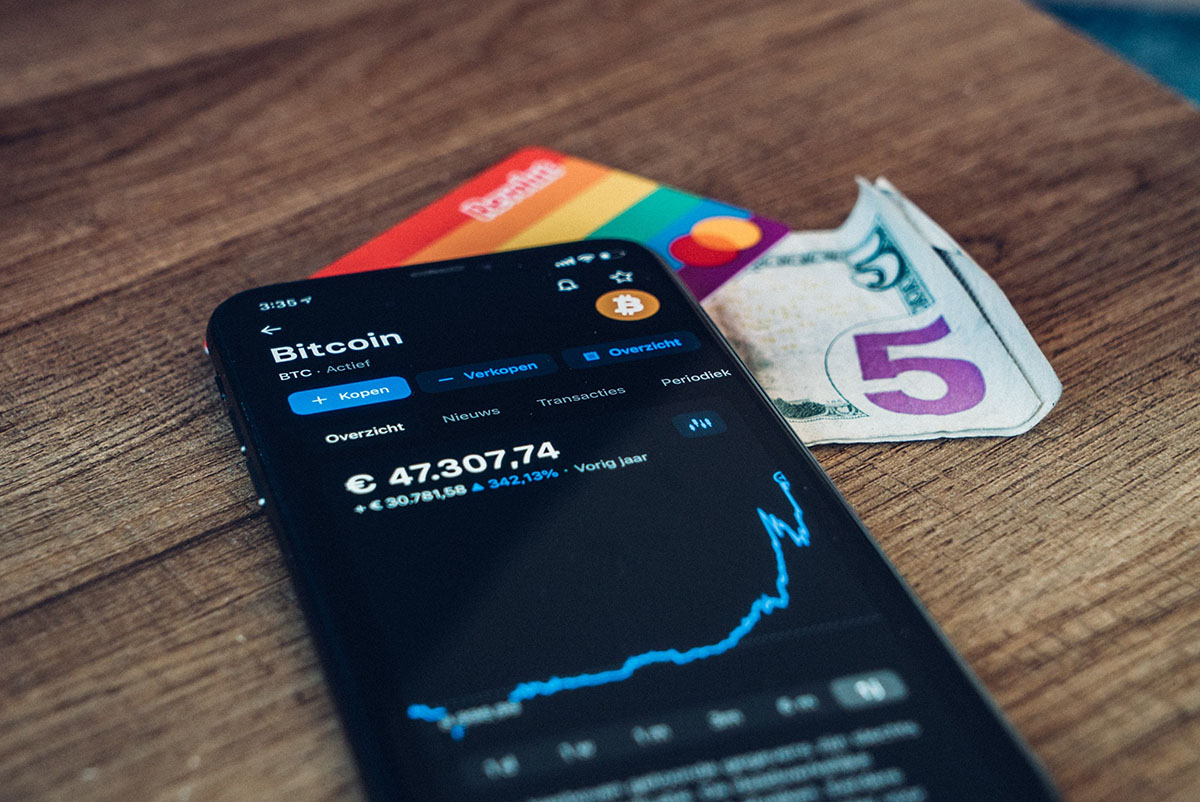

Finance
How To Make A Cryptocurrency Wallet
Published: October 4, 2023
Learn how to create a secure cryptocurrency wallet and manage your finances with ease. Start investing and protecting your digital assets today.
(Many of the links in this article redirect to a specific reviewed product. Your purchase of these products through affiliate links helps to generate commission for LiveWell, at no extra cost. Learn more)
Table of Contents
- Introduction
- What is a Cryptocurrency Wallet?
- Types of Cryptocurrency Wallets
- Web-based Wallets
- Desktop Wallets
- Mobile Wallets
- Hardware Wallets
- Paper Wallets
- Choosing the Right Cryptocurrency Wallet
- Setting up a Cryptocurrency Wallet
- Creating a New Wallet
- Backing Up your Wallet
- Securing your Wallet
- Transferring Cryptocurrency to your Wallet
- Sending Cryptocurrency from your Wallet
- Receiving Cryptocurrency to your Wallet
- Importing an Existing Wallet
- Conclusion
Introduction
Cryptocurrencies have become increasingly popular in recent years, revolutionizing the world of finance and providing individuals with new opportunities to store and transact value. If you’re new to the world of cryptocurrencies, one of the first things you’ll need to familiarize yourself with is a cryptocurrency wallet.
A cryptocurrency wallet is a digital tool that allows you to securely store, manage, and transact your cryptocurrencies. In simple terms, it’s like a digital bank account that holds your digital currencies. However, unlike a traditional bank account, cryptocurrency wallets don’t hold physical currency. Instead, they store cryptographic keys, also known as private keys, which are required to access and manage your cryptocurrencies.
There are various types of cryptocurrency wallets available, each with its own advantages and disadvantages. The choice of wallet depends on factors such as convenience, security, and the type of cryptocurrencies you want to store.
In this article, we’ll explore the different types of cryptocurrency wallets and provide you with insights on how to choose the right wallet for your needs. We’ll also guide you through the process of setting up a wallet, securing your funds, and performing transactions.
Before we delve into the specifics, it’s important to note that while cryptocurrency wallets provide a secure way to store and transact digital assets, they also come with their own set of risks. It’s crucial to exercise caution, follow best practices in security, and stay updated on the latest developments in the field of cryptocurrencies. With that being said, let’s dive into the world of cryptocurrency wallets and discover how you can make the most of this exciting technology.
What is a Cryptocurrency Wallet?
A cryptocurrency wallet is a digital tool that allows users to securely store, manage, and transact their cryptocurrencies. In essence, it serves as a virtual wallet for your digital assets. However, it’s important to note that a cryptocurrency wallet doesn’t actually store the cryptocurrencies themselves. Instead, it stores the private keys that grant access to and control over the cryptocurrencies tied to those keys.
Private keys are essentially long strings of alphanumeric characters that act as the digital signatures required to validate cryptocurrency transactions. They are generated using complex algorithms and are unique to each user. Without private keys, it is impossible to access or transfer the cryptocurrencies associated with a particular wallet.
It’s crucial to understand that cryptocurrencies exist on a decentralized network known as a blockchain. While the blockchain keeps a public record of all transactions, the private keys stored in a wallet are needed to verify ownership and authorize the movement of funds. This means that if you lose access to your private keys, you may lose access to your cryptocurrencies forever.
Cryptocurrency wallets come in various forms, including web-based wallets, desktop wallets, mobile wallets, hardware wallets, and paper wallets. Each type has its own unique features, benefits, and level of security.
Overall, cryptocurrency wallets provide users with a secure and convenient way to manage their digital assets. They enable users to send, receive, and store cryptocurrencies, as well as monitor their account balances and transaction history. By having a cryptocurrency wallet, users have full control and ownership of their digital assets, without the need for intermediaries like banks.
In the next sections, we will explore the different types of cryptocurrency wallets in detail and guide you on choosing the right one for your needs.
Types of Cryptocurrency Wallets
When it comes to cryptocurrency wallets, there are several different types to choose from, each offering its own unique set of features and advantages. Understanding the different types of wallets can help you make an informed decision based on your specific needs and preferences. Here are the most common types of cryptocurrency wallets:
- Web-based Wallets: Also known as online wallets, these wallets operate through a web browser and are hosted on third-party servers. They are convenient to use as they can be accessed from any device with an internet connection. However, they are also more susceptible to security breaches, as the private keys are stored on the server.
- Desktop Wallets: Desktop wallets are software applications that you install on your computer. They provide a higher level of security as you have full control over your private keys. However, they are only accessible on the device where the wallet is installed.
- Mobile Wallets: Mobile wallets are smartphone applications that allow you to manage your cryptocurrencies on the go. They offer convenience and portability, making it easy to send and receive cryptocurrencies using your mobile device. While they may not have the same level of security as hardware wallets, many mobile wallets have built-in security features such as biometric authentication.
- Hardware Wallets: Hardware wallets are physical devices that store your private keys offline, away from potential online threats. They are often considered the most secure option as the private keys never leave the device. Hardware wallets are typically USB devices that require a connection to a computer or smartphone to initiate transactions.
- Paper Wallets: Paper wallets are a form of cold storage where the private keys are printed or written on a piece of paper. They provide an offline way to store cryptocurrencies and are highly secure as long as the paper is kept safe from physical damage and unauthorized access. Paper wallets are typically used for long-term storage and are not suitable for frequent transactions.
Each type of wallet has its own pros and cons, so it’s important to consider your specific requirements before choosing one. Factors such as convenience, security, accessibility, and the level of control you have over your private keys should all be taken into account.
In the following sections, we will explore each type in more detail, providing you with insights on their features, benefits, and potential drawbacks.
Web-based Wallets
Web-based wallets, also known as online wallets, are cryptocurrency wallets that operate through a web browser and are hosted on third-party servers. These wallets are accessible from any device with an internet connection, making them convenient for users who frequently access their cryptocurrencies on different devices.
Web-based wallets are easy to set up and use, as they typically require users to create an account and use login credentials to access their wallet. They offer a user-friendly interface that allows users to manage their cryptocurrencies, check their account balances, and perform transactions.
One of the main advantages of web-based wallets is their convenience. Users can access their wallet from anywhere, whether it’s on their personal computer, mobile device, or a public computer. This accessibility makes web-based wallets ideal for users who need to send or receive cryptocurrencies on the go.
However, it’s important to note that web-based wallets come with certain risks. Since the wallet and its private keys are stored on third-party servers, there is a higher chance of security breaches. Hackers may try to gain unauthorized access to the server, potentially compromising the wallet and the funds stored within.
To mitigate this risk, it’s crucial to choose a reputable and secure web-based wallet provider. Look for platforms that offer strong security measures, such as two-factor authentication, encryption, and multi-signature functionality. Additionally, make sure to keep your login credentials confidential and regularly update your passwords.
Another consideration with web-based wallets is that you are entrusting your private keys to a third party. This means that if the service provider’s server goes down or experiences technical issues, you may not be able to access your wallet and perform transactions until the issue is resolved. It’s important to research and choose a reliable web-based wallet provider with a history of good uptime and customer support.
Overall, web-based wallets can be a convenient option for users who value accessibility and ease of use. However, it’s important to be cautious and choose a trusted provider to ensure the security of your cryptocurrencies.
Desktop Wallets
Desktop wallets are software applications that you download and install on your computer or laptop. They provide a higher level of security and control compared to web-based wallets as you have full control over your private keys. Desktop wallets are a popular choice for individuals who prioritize security and want to store their cryptocurrencies locally.
One of the key advantages of desktop wallets is that they store your private keys on your device, rather than on a remote server. This means that you have direct access to your cryptocurrencies and are not reliant on a third-party service. Desktop wallets allow you to generate and control multiple addresses, making it easier to organize and manage your transactions.
Desktop wallets are generally more secure than web-based wallets, as they are less vulnerable to hacking attacks. However, it’s important to ensure that your computer is free from malware and viruses, as these can compromise the security of your desktop wallet. To enhance security, it’s recommended to use antivirus software and keep your operating system and wallet application up to date with the latest security patches.
There are different types of desktop wallets, including full-node wallets and lightweight wallets. Full-node wallets require users to download and sync the entire blockchain, which can take a considerable amount of time and require significant storage space. On the other hand, lightweight wallets, also known as SPV (Simplified Payment Verification) wallets, do not require users to download the entire blockchain. Instead, they rely on trusted nodes to verify transactions, offering a more lightweight and efficient user experience.
While desktop wallets provide a high level of security, it’s important to create backups of your wallet and keep them in a safe place. This ensures that you can recover your wallet in the event of computer failure, loss, or theft. Many desktop wallet applications offer a backup and restore feature, allowing you to easily create and restore backups of your wallet.
Overall, desktop wallets are a popular choice for users who prioritize security and control over their cryptocurrencies. They provide a reliable and convenient way to manage your digital assets locally, offering peace of mind knowing that you have direct access to your private keys.
Mobile Wallets
Mobile wallets are smartphone applications that allow users to manage their cryptocurrencies on the go. With the increasing popularity of mobile devices, mobile wallets have become a popular choice for individuals who want quick and convenient access to their digital assets.
One of the main advantages of mobile wallets is their portability and accessibility. With a mobile wallet, you can conveniently send and receive cryptocurrencies anytime and anywhere using your smartphone. This makes it ideal for making quick in-person transactions or sending funds to friends and family.
Mobile wallets offer a user-friendly interface designed specifically for smaller screens, making it easy to navigate and perform transactions. They often integrate with other mobile applications and services, allowing seamless integration for mobile commerce and payment solutions.
Security is a key consideration when using mobile wallets. Most reputable mobile wallet applications offer a range of security features to protect your cryptocurrencies. These features may include PIN codes, biometric authentication (such as fingerprint or face recognition), and encryption of private keys. It’s important to choose a mobile wallet that implements strong security measures to protect your funds.
However, it’s important to be cautious with mobile wallets, as smartphones are vulnerable to loss, theft, and hacking. To enhance security, it’s recommended to enable device lock features, regularly update your mobile operating system and wallet application, and avoid installing unknown or suspicious applications on your device.
Another consideration with mobile wallets is the risk of losing access to your funds if you lose your smartphone or it gets damaged. To mitigate this risk, it’s crucial to create backups of your mobile wallet and store them in a secure place. Most mobile wallet applications have a backup and restore feature, allowing you to easily recover your wallet on a new device.
Overall, mobile wallets provide a convenient solution for managing your cryptocurrencies on the go. They offer the flexibility of being able to transact anytime and anywhere, making them a popular choice for individuals who lead an active and mobile lifestyle.
Hardware Wallets
Hardware wallets are physical devices specifically designed to securely store your private keys offline. They offer the highest level of security for storing cryptocurrencies and are considered one of the safest options available.
A hardware wallet is typically a small, portable device that connects to your computer or smartphone via USB or Bluetooth. It generates and stores your private keys in a secure way, away from potential online threats. Since the private keys are never exposed to the internet, they are protected from hacking attempts and malware.
One of the key advantages of hardware wallets is their “cold storage” feature. Cold storage means that your private keys are kept offline, significantly reducing the risk of unauthorized access. This makes hardware wallets an ideal choice for long-term storage of large amounts of cryptocurrencies.
Hardware wallets offer a user-friendly interface, making it easy for individuals, regardless of their technical expertise, to manage their cryptocurrencies. They often come with built-in security features such as PIN codes, passphrase protection, and secure chip technology to prevent physical tampering and ensure the integrity of the device.
To make transactions with a hardware wallet, you typically need to connect it to a computer or mobile device and authorize the transaction using the device’s interface. The private keys never leave the hardware wallet, ensuring that even if your computer or smartphone is compromised, your funds are still secure.
While hardware wallets provide excellent security, they do come at a cost. Hardware wallets are generally more expensive compared to other types of wallets. However, the investment is worth it for individuals who want the highest level of security for their cryptocurrency holdings.
It’s important to ensure that you purchase a hardware wallet from a reputable source to avoid counterfeit devices. Always verify the authenticity of the wallet and follow the manufacturer’s instructions for setting up and using the device.
In summary, hardware wallets offer the utmost security for storing cryptocurrencies. They provide offline storage of private keys, protecting your funds from online threats. If security is a top priority for you, a hardware wallet is an excellent choice for safeguarding your digital assets.
Paper Wallets
Paper wallets are a form of cold storage for cryptocurrencies. They involve printing or writing down your private keys on a piece of paper, which can then be stored in a secure physical location. Paper wallets are considered one of the most secure methods for storing cryptocurrencies, as they are not susceptible to hacking or online threats.
Creating a paper wallet involves generating a new wallet address and its corresponding private key using an offline computer. Once generated, the private key is printed or written down on a piece of paper. The paper wallet usually includes a QR code representation of the address and private key for ease of use during transactions.
One of the main benefits of paper wallets is that they provide complete control over your private keys, as they are stored offline. Since the private keys are not exposed to the internet, the risk of them being compromised is significantly reduced.
It’s important to note that paper wallets should be generated using a trusted and secure process. You can find reputable paper wallet generators online that allow you to create the wallet offline, eliminating the risk of key generation being tampered with. It’s recommended to generate the wallet on a secure, virus-free computer and keep the process private to prevent any potential compromise of the keys.
While paper wallets are highly secure, there are certain considerations to keep in mind. Paper is susceptible to physical damage, such as fire, water, or being torn. It’s crucial to store the paper wallet in a safe and secure location, away from potential hazards.
Another consideration with paper wallets is that they are not as convenient for frequent transactions. In order to access the funds stored in a paper wallet, the private key needs to be imported into a digital wallet application or an online service. This process involves exposing the private key to potential online threats, so caution must be exercised.
Additionally, it’s advisable to make multiple copies of the paper wallet and store them in separate secure locations. This ensures that you have a backup in case the original paper wallet gets lost or damaged.
In summary, paper wallets offer a highly secure method of storing cryptocurrencies offline. They provide complete control over your private keys and are not susceptible to online hacking. However, they require careful handling and storage to protect them from physical damage. For long-term storage of significant amounts of cryptocurrencies, paper wallets can be an excellent option.
Choosing the Right Cryptocurrency Wallet
With a variety of cryptocurrency wallets available, choosing the right one can be a daunting task. The decision ultimately depends on your specific needs, preferences, and priorities. Here are some factors to consider when selecting a cryptocurrency wallet:
- Security: Security should be a top consideration when choosing a cryptocurrency wallet. Look for wallets that employ strong security measures, such as encryption, two-factor authentication, and hierarchical deterministic (HD) wallets. Hardware wallets, such as Ledger or Trezor, are renowned for their robust security features.
- Convenience: Consider the level of convenience you need in managing your cryptocurrencies. Web-based wallets and mobile wallets offer easy accessibility from multiple devices, while desktop wallets offer more control but are limited to a single device.
- Supported Cryptocurrencies: Ensure that the wallet you choose supports the cryptocurrencies you plan to store or transact. Some wallets support a wide range of cryptocurrencies, while others are designed for specific coins or tokens.
- User Interface: User-friendly interfaces can significantly enhance your experience with the wallet. Look for wallets with intuitive and easy-to-navigate interfaces that make managing your cryptocurrencies straightforward and hassle-free.
- Backup and Recovery: Consider the backup and recovery options offered by the wallet. Look for wallets that provide easy-to-follow backup instructions and the ability to restore your wallet in the event of loss or theft.
- Community Trust: Research the reputation and community trust surrounding the wallet. Read user reviews, check online forums, and ensure that the wallet has a proven track record of reliable service and customer support.
It’s worth noting that you are not limited to using a single wallet. Many individuals use different wallets for different purposes. For example, they may use a hardware wallet for long-term storage, a mobile wallet for day-to-day transactions, and a web-based wallet for quick access on the go.
Ultimately, finding the right cryptocurrency wallet involves striking the right balance between security, convenience, and usability. It’s important to assess your needs and priorities and choose a wallet that aligns with them. Remember to stay updated on the latest developments in wallet security and best practices to ensure the safety of your digital assets.
Setting up a Cryptocurrency Wallet
Setting up a cryptocurrency wallet is a straightforward process that varies depending on the type of wallet you choose. Here, we will provide a general overview of how to set up a cryptocurrency wallet:
- Research Wallet Options: Begin by researching and selecting the type of cryptocurrency wallet that best suits your needs. Consider factors such as security, convenience, and supported cryptocurrencies.
- Choose a Wallet Provider: Once you’ve decided on the type of wallet, choose a reputable wallet provider that offers the features you require. Look for well-established providers with positive user reviews and a strong track record.
- Download or Access the Wallet: Depending on the type of wallet, download the wallet application to your device or access the web-based wallet through your preferred browser.
- Create a New Wallet: Follow the instructions provided by the wallet provider to create a new wallet. This typically involves entering a username, password, and other necessary information.
- Generate Private Keys: Depending on the wallet type, the provider may automatically generate a pair of private and public keys for your wallet. Ensure that you have access to and can securely store your private keys, as they are essential for accessing and managing your cryptocurrencies.
- Back up Your Wallet: Set up a backup mechanism for your wallet to prevent loss of funds in the event of device failure or loss. This usually involves creating a backup seed phrase or downloading a backup file. Follow the wallet provider’s instructions to securely store this backup information.
- Secure Your Wallet: Implement additional security measures recommended by the wallet provider, such as enabling two-factor authentication or setting up a PIN code. These precautions help protect your wallet and funds from unauthorized access.
- Test Your Wallet: Before depositing a significant amount of cryptocurrency into your wallet, test it with a small transaction to ensure that you can send and receive funds without any issues.
- Understand Wallet Functions: Familiarize yourself with the features and functions of your chosen wallet. Learn how to check your account balance, view transaction history, and perform transactions such as sending and receiving cryptocurrencies.
It’s important to follow the wallet provider’s instructions carefully and exercise caution when setting up your cryptocurrency wallet. Prioritize security, keep your private keys secure, and regularly update your wallet software to protect against potential vulnerabilities.
Remember that each wallet provider may have specific setup instructions and requirements, so always refer to the official documentation or support materials provided by the wallet provider.
Creating a New Wallet
Creating a new wallet is the first step in setting up your journey into the world of cryptocurrencies. While the specific process may vary depending on the wallet provider and type of wallet you choose, here is a general guide on how to create a new wallet:
- Research and Choose a Wallet Type: Start by researching the different types of cryptocurrency wallets available, such as web-based, desktop, mobile, hardware, or paper wallets. Consider factors such as security, convenience, and accessibility to determine the best fit for your needs.
- Select a Reputable Wallet Provider: Once you’ve decided on the type of wallet, choose a reputable wallet provider that offers the features you require. Look for providers with a solid reputation, positive user reviews, and a history of maintaining the security of their wallets.
- Visit the Wallet Provider’s Website or Download the Wallet Application: Depending on the type of wallet, go to the wallet provider’s official website or download the wallet application from a trusted source. Ensure that you are visiting the official website or using a verified source to avoid fake or malicious applications.
- Click on “Create New Wallet” or a Similar Option: On the wallet provider’s website or application, look for an option to create a new wallet. It may be labeled as “Get Started,” “Create Account,” or something similar.
- Enter the Required Information: Follow the prompts to enter the necessary information to create your new wallet. This may include a username, password, and any other security-related details specified by the wallet provider.
- Generate or Receive Your Private Keys: Depending on the wallet type, the provider may automatically generate a pair of private and public keys for your wallet. In some cases, you may be asked to create your own private key. Ensure that you have access to and can securely store your private keys, as they are essential for accessing and managing your cryptocurrencies.
- Set Up Backup and Recovery: Set up a backup mechanism for your wallet to avoid the risk of losing access to your funds. Follow the instructions provided by the wallet provider to set up a backup seed phrase, download a backup file, or choose an alternate recovery method. Store this backup information securely in a separate location.
- Enhance Wallet Security: Take additional steps to secure your wallet, such as enabling two-factor authentication (2FA) or setting up a PIN code. These measures add an extra layer of protection to your wallet and make it more resistant to unauthorized access.
- Verify and Test Your Wallet: Before depositing a significant amount of cryptocurrency into your new wallet, it’s recommended to verify and test its functionality. Send a small transaction to ensure that you can successfully send and receive funds without any issues.
It’s crucial to follow the wallet provider’s instructions carefully and take necessary precautions during the wallet creation process. Remember to keep your private keys secure and regularly update your wallet software to ensure the highest level of security.
Please note that these instructions are a general guideline, and the specific steps may differ based on the wallet provider and type of wallet you choose. Always refer to the official documentation or support materials provided by the wallet provider for accurate instructions.
Backing Up your Wallet
Backing up your cryptocurrency wallet is an essential step to ensure the safety and security of your funds. It provides a way to recover your wallet in the event of device failure, loss, or theft. Losing access to your wallet without a backup can result in permanent loss of your cryptocurrencies. Here’s a guide on how to back up your wallet:
- Understand Wallet Backup Options: Different wallets offer various backup options such as seed phrases, backup files, or private key exports. Familiarize yourself with the backup options provided by your wallet to determine the most suitable one for your needs.
- Create a Backup Seed Phrase: Many wallets, especially those based on hierarchical deterministic (HD) technology, generate a backup seed phrase during the wallet creation process. This seed phrase consists of a series of randomly generated words. Write down the seed phrase in the correct order and store it in a safe place. Keep it confidential and away from unauthorized access.
- Download a Backup File: Some wallets allow you to create a backup file that contains your wallet information. Follow the wallet provider’s instructions to download and securely store this file. Ensure that you use strong encryption and protect the file from physical damage and unauthorized access.
- Export Your Private Keys: For wallets that provide the option to export private keys, follow the instructions to export and securely store the private keys offline. Encrypt the exported private key file or write down the key on paper and keep it in a secure location.
- Store Backups Securely: Regardless of the backup method, store your backups in multiple secure locations. Consider using offline storage options such as hardware wallets, encrypted USB drives, or safe deposit boxes. Make sure to protect backups from physical damage, loss, and unauthorized access.
- Test Your Backup: To ensure the effectiveness of your backup, simulate a wallet recovery process using the backup. Install a fresh instance of the wallet software and restore your wallet using the backup information to confirm that you can successfully access and recover your funds.
- Regularly Update Backups: As you make changes to your wallet, such as adding new addresses or receiving new cryptocurrencies, update your backups accordingly. Regularly check and update your backup storage to include any new wallet information.
Remember, the security of your backups is critical. Take precautions to protect your backup information from loss, damage, and unauthorized access. Never share your backup details with anyone and be cautious of phishing attempts or scams that may try to obtain your backup information.
By regularly backing up your wallet and storing the backups securely, you can have peace of mind knowing that your funds are protected and recoverable, even in the face of unforeseen circumstances.
Securing your Wallet
Securing your cryptocurrency wallet is of utmost importance to protect your funds from unauthorized access and potential loss. Here are some essential measures to consider when securing your wallet:
- Choose a Strong Password: Select a unique and strong password for your wallet. Avoid using common or easily guessable passwords and consider using a combination of uppercase and lowercase letters, numbers, and special characters.
- Enable Two-Factor Authentication (2FA): Activate two-factor authentication whenever possible. This adds an extra layer of security by requiring a verification code, typically sent to your mobile device, to access your wallet.
- Keep Software and Firmware Updated: Regularly update your wallet software and firmware to benefit from the latest security patches and bug fixes. Manufacturers often release updates to address vulnerabilities and improve wallet security.
- Be Cautious of Phishing Attempts: Be vigilant against phishing attempts, where malicious actors try to trick you into revealing your wallet information. Always double-check the authenticity of websites, emails, and messages before entering sensitive information.
- Use Trusted Wallet Providers: Only use wallets from reputable and trusted providers. Research wallet providers thoroughly and ensure they have a solid track record of security. Avoid downloading wallets from unofficial sources or unverified third-party websites.
- Store Private Keys Securely: The private keys serve as the access keys to your funds, so it’s crucial to store them securely. Consider using hardware wallets or offline storage solutions like encrypted USB drives or paper wallets. Keep multiple copies of your private keys in separate, secure locations.
- Be Mindful of Public Wi-Fi: Avoid accessing your wallet or making transactions on public Wi-Fi networks, as they may be unsecured and vulnerable to interception. Use private and secure networks or consider using a virtual private network (VPN) for added protection.
- Educate Yourself about Scams: Stay informed about common scams and frauds targeting cryptocurrency users. Be cautious of unsolicited offers, investment schemes, and suspicious websites. Always verify the legitimacy of any transaction or investment opportunity before proceeding.
- Regularly Monitor your Wallet: Keep a close eye on your wallet activity, regularly checking for unauthorized transactions or any suspicious behavior. Set up notifications or alerts to notify you of any unusual activity on your wallet.
By implementing these security measures and staying vigilant, you can significantly enhance the security of your cryptocurrency wallet and protect your funds from potential threats. Additionally, it’s essential to stay updated on emerging security practices and advancements in wallet technology to adapt to evolving security challenges.
Transferring Cryptocurrency to your Wallet
Once you have set up your cryptocurrency wallet, the next step is to transfer your desired cryptocurrencies to your wallet. This allows you to have full control and ownership of your digital assets. Here’s a guide on how to transfer cryptocurrency to your wallet:
- Identify the Receiving Address: In your wallet, locate your unique receiving address for the specific cryptocurrency you want to transfer. This address is a long alphanumeric string associated with your wallet.
- Copy the Receiving Address: Copy the receiving address carefully. Ensure that you copy the entire address and avoid any typos or errors. It’s recommended to double-check the copied address before proceeding.
- Access the Sending Wallet or Exchange: If you are transferring cryptocurrency from another wallet, access that wallet and look for the option to send or transfer funds. If you are transferring from a cryptocurrency exchange, log in to your exchange account and proceed to the withdrawal or send function.
- Enter the Receiving Address: Paste the copied receiving address into the appropriate field in the sending wallet or exchange. Take care to verify that the pasted address matches the one from your wallet.
- Specify the Amount: Enter the amount of cryptocurrency you wish to transfer. Be mindful of any transaction fees associated with the transfer, as these fees can vary depending on the network congestion and the cryptocurrency being transferred.
- Review and Confirm: Before confirming the transfer, carefully review all the details, including the receiving address and the amount. Once you are certain that the information is correct, proceed to confirm the transfer.
- Wait for Confirmation: Depending on the cryptocurrency and network congestion, it may take some time for the transfer to be confirmed on the blockchain. This confirmation process ensures that the transaction is final and cannot be reversed.
- Check your Wallet: Once the transaction is confirmed, check your wallet balance to ensure that the transferred cryptocurrency has been successfully deposited into your wallet. The balance should reflect the transferred amount.
- Keep Transaction Records: It is recommended to keep a record of your cryptocurrency transactions, including the date, amount, and transaction ID or hash. This information can be helpful for future reference, tax purposes, or to resolve any potential disputes.
It’s important to exercise caution when transferring cryptocurrencies and double-check all the details to ensure accuracy. Once a transfer is initiated, it is generally not possible to reverse or undo the transaction. If you have any concerns or questions, it’s advisable to seek guidance from reputable sources or consult with experts in the cryptocurrency field.
By following these steps, you can successfully transfer your chosen cryptocurrencies to your wallet and gain control over your digital assets.
Sending Cryptocurrency from your Wallet
Sending cryptocurrency from your wallet allows you to transfer funds to other individuals or entities. It’s a straightforward process that requires a few simple steps. Here’s a guide on how to send cryptocurrency from your wallet:
- Access your Wallet: Open your cryptocurrency wallet application or access your web-based wallet using your login credentials.
- Locate the Sending Function: Look for the option to send or transfer funds within your wallet’s interface. This function may be labeled as “Send,” “Transfer,” or have a similar name.
- Specify the Receiving Address: Enter the receiving address of the recipient. The receiving address is a long alphanumeric string associated with the recipient’s wallet. Be careful to enter the correct address to ensure the funds are sent to the intended recipient.
- Enter the Transfer Amount: Input the amount of cryptocurrency you wish to send to the recipient. Take into consideration any transaction fees associated with the transfer, as these fees can vary depending on the cryptocurrency and network congestion.
- Review the Details: Double-check all the transaction details, including the receiving address and the amount, to ensure accuracy. Verify that the information is correct before proceeding.
- Confirm the Transfer: Confirm the transfer by following the prompts provided by your wallet. Some wallets may require additional verification steps, such as entering a PIN code or authorizing the transaction via two-factor authentication (2FA).
- Wait for Confirmation: After confirming the transfer, it may take some time for the transaction to be confirmed on the blockchain. This confirmation process ensures that the transaction is validated and added to the blockchain records.
- Transaction Confirmation: Once the transaction is confirmed, you will receive a transaction ID or transaction hash. This ID serves as proof of the transaction and can be used to track the transfer on the blockchain explorer.
- Inform the Recipient: If necessary, provide the recipient with the transaction ID or hash so they can track the progress of the transaction. This can be particularly helpful if there are any delays or issues with the transfer.
It’s important to note that different cryptocurrencies may have varying confirmation times. Some cryptocurrencies may confirm transactions within minutes, while others may take longer due to network congestion or other factors. Be patient and allow sufficient time for the transfer to be confirmed on the blockchain.
By following these steps, you can securely send cryptocurrency from your wallet to the intended recipient, facilitating seamless and efficient transactions in the world of digital assets.
Receiving Cryptocurrency to your Wallet
Receiving cryptocurrency to your wallet is a straightforward process that allows you to accept funds from other individuals or entities. Here’s a guide on how to receive cryptocurrency to your wallet:
- Obtain your Receiving Address: Open your cryptocurrency wallet application or access your web-based wallet using your login credentials. Locate and copy your unique receiving address for the specific cryptocurrency you want to receive.
- Provide the Receiving Address: Share your receiving address with the sender. They will need your receiving address to initiate the transfer. Be sure to provide the correct cryptocurrency-specific receiving address to ensure the funds are sent to the right place.
- Double-check the Receiving Address: Before sharing your receiving address, double-check it for accuracy. Cryptocurrency transactions are irreversible, and entering an incorrect address could result in permanent loss of funds.
- Inform the Sender of the Transaction: If necessary, let the sender know that you have provided them with the receiving address. Inform them to initiate the transaction and provide any additional details they may need, such as the transaction amount or transaction ID.
- Wait for the Transaction to be Confirmed: Once the sender initiates the transaction, you will need to wait for the transaction to be confirmed on the blockchain. Confirmation times vary depending on the specific cryptocurrency being transferred, as well as network congestion.
- Monitor your Wallet: Keep an eye on your wallet to see when the transaction is confirmed and the funds are successfully deposited. The balance in your wallet should reflect the received amount of cryptocurrency.
- Verify the Transaction: After the transaction is confirmed, verify the details of the transaction, including the transaction ID or hash. This serves as proof of the transaction and can be used to track it on the blockchain explorer.
- Monitor for Multiple Confirmations: For added security, some wallets may require multiple confirmations on the blockchain before the funds are fully available in your wallet. This helps ensure the integrity and validity of the transaction.
- Repeat the Process for Different Cryptocurrencies: If you want to receive different cryptocurrencies to your wallet, repeat the above process for each cryptocurrency. Every cryptocurrency has its own unique receiving address associated with your wallet.
Remember to take necessary precautions when receiving cryptocurrency, such as double-checking the receiving address before sharing it and monitoring transactions for accuracy. By following these steps, you can receive cryptocurrency securely into your wallet and have full control over your digital assets.
Importing an Existing Wallet
If you already have an existing cryptocurrency wallet and want to continue using it or access your funds through a different wallet application, you may need to import your wallet. Importing an existing wallet allows you to regain access to your funds without needing to create a new wallet. Here’s a guide on how to import an existing wallet:
- Select the New Wallet Application: Decide on the new wallet application you want to use. Ensure that the new wallet supports the same cryptocurrency as your existing wallet.
- Locate the Import Wallet Function: Open your new wallet application and look for the option to import a wallet or restore a wallet. The specific location of this function may differ depending on the wallet application.
- Gather the Required Information: Prepare the necessary information to import your existing wallet. This may include your wallet’s seed phrase, private key, or wallet file. Consult your existing wallet provider or documentation to find the required information for importing.
- Follow the Import Process: Enter the required information in the import wallet function of the new wallet application. Carefully follow the instructions provided by the new wallet application to ensure a successful import.
- Verify the Import: After the import process, verify that your wallet has been successfully imported. Check that your transaction history, account balances, and other wallet details are visible in the new wallet application.
- Double-check Wallet Security: Once your wallet is imported, take steps to ensure its security. Set up strong passwords, enable two-factor authentication (2FA), and follow any security recommendations provided by the new wallet application.
- Test the Wallet: To ensure that the imported wallet is fully functional, test it with a small transaction. Send a small amount of cryptocurrency to your new wallet and verify that the transaction is successfully processed.
- Update Backup and Recovery: If you had a backup or recovery mechanism for your existing wallet, update it to include the new wallet information. Create a new backup or update the backup with the new wallet’s seed phrase, private key, or wallet file.
Importing an existing wallet allows you to streamline your cryptocurrency management and access your funds through a different wallet application. It’s important to follow the instructions provided by the new wallet application and keep your wallet and backup information secure to protect your funds.
Note that the specific steps for wallet import may vary depending on the wallet application and the type of wallet you are importing from. Refer to the documentation or support materials provided by the wallet application for accurate instructions.
Conclusion
Cryptocurrency wallets play a pivotal role in securely storing, managing, and transacting with digital assets. Whether you’re new to cryptocurrencies or a seasoned investor, understanding the different types of wallets and how to use them is crucial for safeguarding your funds and accessing the exciting opportunities offered by the world of decentralized finance.
In this comprehensive guide, we explored various types of cryptocurrency wallets, including web-based wallets, desktop wallets, mobile wallets, hardware wallets, and paper wallets. Each type has its own unique features, advantages, and considerations, allowing you to choose the wallet that aligns with your needs and priorities.
We also discussed the steps involved in setting up a wallet, including creating a new wallet, backing up your wallet, securing your funds, and importing an existing wallet. By following best practices in wallet security, such as using strong passwords, enabling two-factor authentication, and keeping backups of your wallet information, you can significantly enhance the safety of your digital assets.
Transferring, sending, and receiving cryptocurrencies are fundamental actions within the crypto space. We covered the step-by-step process of how to transfer cryptocurrencies to your wallet, how to send cryptocurrencies from your wallet to others, and how to receive cryptocurrencies into your wallet. These actions empower you with full control over your funds and allow you to participate in the digital economy confidently.
Remember, as the cryptocurrency landscape evolves, it’s important to stay informed about the latest security practices, wallets, and industry developments. Keep educating yourself, be cautious of potential scams or phishing attempts, and regularly update your wallet software to benefit from the latest security enhancements.
In conclusion, cryptocurrency wallets are the gateways to your digital assets, providing you with the tools to securely navigate the world of cryptocurrencies. With proper understanding, careful consideration, and adherence to security best practices, you can confidently manage and grow your cryptocurrency holdings.
